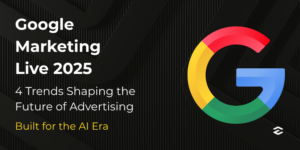
Google Marketing Live 2025: 4 Trends Advertisers Must Know
Google is doubling down on AI-first advertising strategies in 2025. Here are the four trends from Google Marketing Live that advertisers must act on.

“We doubled our conversion rate by changing the page headline.” Or, “We didn’t think an asset was going to work, then we changed the form fields, and downloads went through the roof!”
What is less common though, is an honest appraisal of the tools available to execute these tests, and what you should look for when choosing a solution.
The first step in making this assessment is to evaluate your unique situation – mainly your staff & their workload, your website’s infrastructure, integrations, and agency relationships. Developing a matrix that outlines this information is vital to choosing the right tool.
A few considerations include:
Once you have a clearer understanding of your specific needs and challenges, it’s time to start evaluating the plethora of options out there. At Closed Loop, two of our favorite tools in this arena – albeit very different – are Unbounce and Optimizely. It is important to note that while these tools may be competitors in a sense, each have unique features that set them apart from others in the space.
Unbounce is really the best tool for rapidly designing, deploying and A/B testing multiple landing pages. After a subdomain is set up on your website, marketers are able to rapidly create customized landing pages for each campaign. This makes Unbounce a step ahead of most other traditional A/B testing options out there.
Strengths:
Drawbacks:
Optimizely is an A/B testing and personalization engine that allows for streamlined testing across all digital experiences within an organization. Optimizely’s bread and butter is highly statistically significant A/B testing of various aspects of one’s website or mobile app. It has a WYSIWYG editor for changing out things like headline, text, formatting, etc. (once set up), but does not provide any assistance with the actual page design.
On the personalization front, Optimizely is quickly expanding upon its personalization features, which allow users to dynamically change the content that is displayed to a user, based on their past browsing activity. For example, if someone has purchased a green hat in the past, Optimizely can leverage this information and show green hats in similar styles, when that user is browsing the eCommerce site two months down the road.
Strengths:
Drawbacks:
Unbounce and Optimizely are both great tools to add to your marketing tool belt, and each one is great for specific situations. Unbounce is Closed Loop’s preferred choice for B2B demand generation teams looking for landing page optimization. Optimizely is a good choice for web development teams looking for website optimization. A thorough analysis of your needs should be done before deciding which solution is right for you. Regardless of the solution you choose, any software that helps you streamline landing page generation and testing is hugely valuable and should be included as part of your overall digital strategy.
All the latest digital advertising tips and industry insights delivered to your inbox every quarter

Google is doubling down on AI-first advertising strategies in 2025. Here are the four trends from Google Marketing Live that advertisers must act on.

Closed Loop and Clover earned three Silver Telly Awards for the “Behind the Business” campaign, celebrating standout creative across CTV and digital.

Learn how leading CMOs are reframing marketing to speak the CFO’s language, drive predictable outcomes, and secure their budgets in 2025 and beyond.